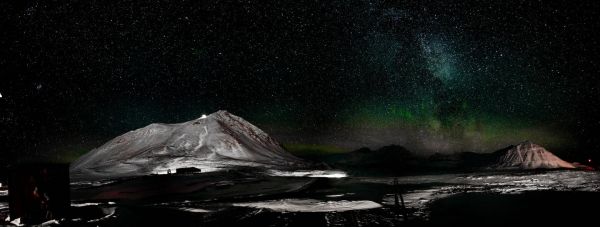On a frigid morning in early December, a team of NASA rocket scientists will huddle in the control room in Ny-Ålesund, Svalbard, a remote archipelago off the northern coast of Norway. Here at the world’s northernmost rocket range, operated by Norway’s Andøya Space Center, the clock may read 8 a.m., but the Sun won’t be up — by that time, it won’t have peeked over the horizon in more than a month.
For a month’s time, Ny-Ålesund will be home to the rocket team behind NASA’s VISIONS-2 mission, short for Visualizing Ion Outflow via Neutral Atom Sensing-2. They have ventured to this extreme place for an up-close look at atmospheric escape, the process whereby Earth is slowly leaking its atmosphere into space. Understanding atmospheric escape on Earth has applications all over the Universe — from predicting which far off planets might be habitable, to piecing together how Mars became the desolate, exposed landscape it is today. VISIONS-2 is scheduled to launch no earlier than Dec. 4, 2018.
Led by Doug Rowland of NASA’s Goddard Space Flight Center in Greenbelt, Maryland, VISIONS-2 is a sounding rocket mission, a type of suborbital rocket that makes brief, targeted flights into space before falling back to Earth just a few minutes later. Sounding rockets are unique among scientific spacecraft for their superior dexterity: They can be carted to remote locations, where they are aimed and shot into short-lived events — like the sudden formation of the aurora borealis — at a moment’s notice.
The aurora borealis is of keen interest to the VISIONS-2 team, but not just for its otherworldly glow. The aurora play are fundamental drivers in the process of atmospheric escape, whereby planets, including Earth, gradually leak their atmosphere into space.
Read more at NASA/Goddard Space Flight Center
Image: Long-exposure photograph of the night sky over Ny-Ålesund, Svalbard. (Credit: Chris Pirner)


